If you like rye bread, you'll love these rye rolls too! With their rich, nutty flavor and caraway aroma, rye rolls make the perfect base for a bread sandwich that not only tastes great, but is also packed with health benefits.
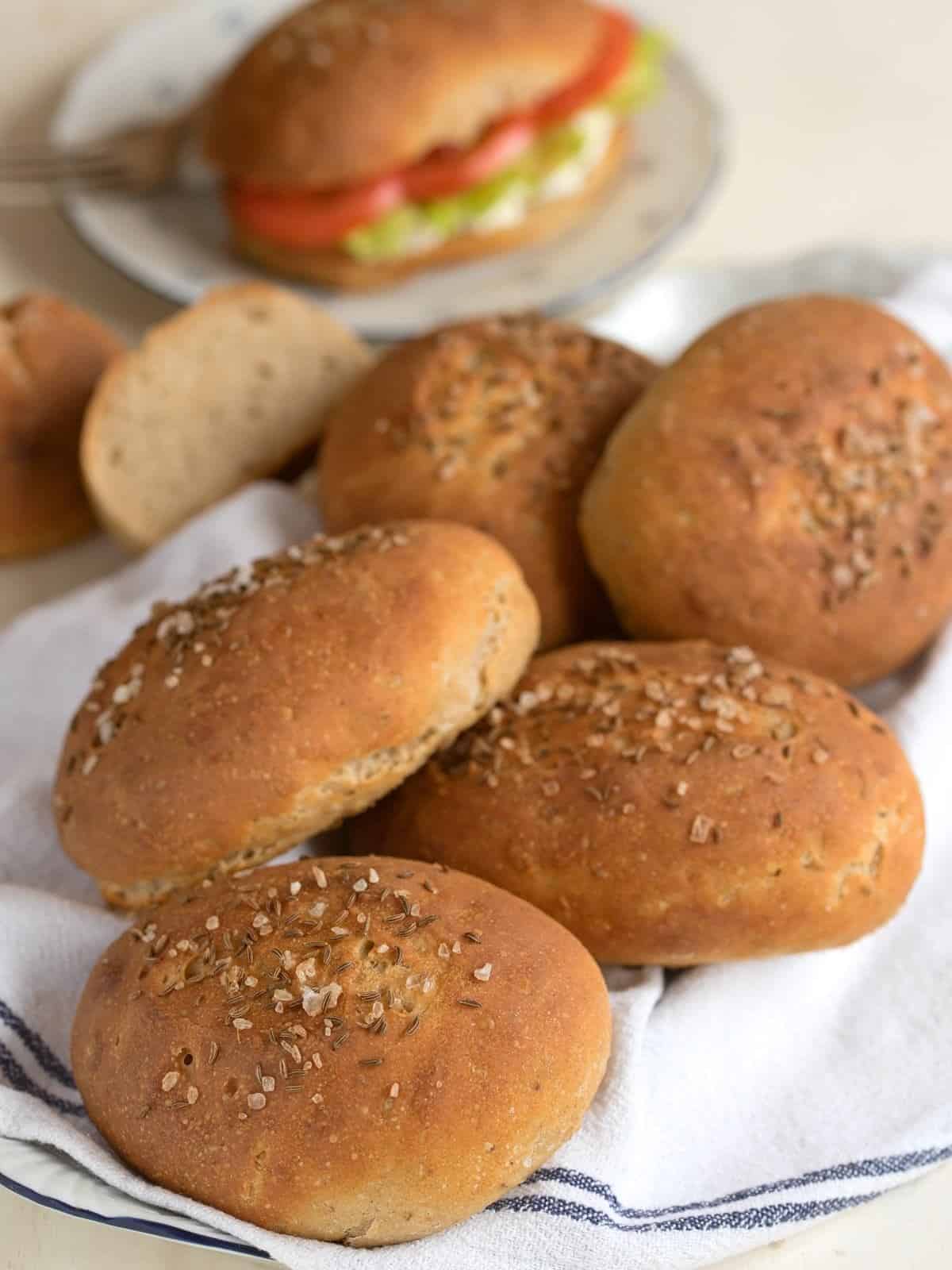
➜ What are Dalamanky rye rolls
The recipe for these rye rolls comes from the Czech Republic, where they are called "Dalamánky." These are small, elongated loaves of yeast dough made from a combination of rye and wheat flour. The rolls have a slit on the surface and are sprinkled with coarse salt and caraway seeds, a typical Czech spice.
➜ Important note on yeast dough
Rye rolls are made using an old baking technique called "omládek" (Czech word). The method involves making the first yeast dough out of some of the measured ingredients. You then add the rest of the ingredients and make a proper dough, which you leave to rise again.
The benefit of preparing yeast dough this way is a tastier, more tender pastry that lasts longer. On the other hand, the extra time required for the first dough to rise could be considered a disadvantage.
➜ Ingredients you need
First yeast dough (omládek):
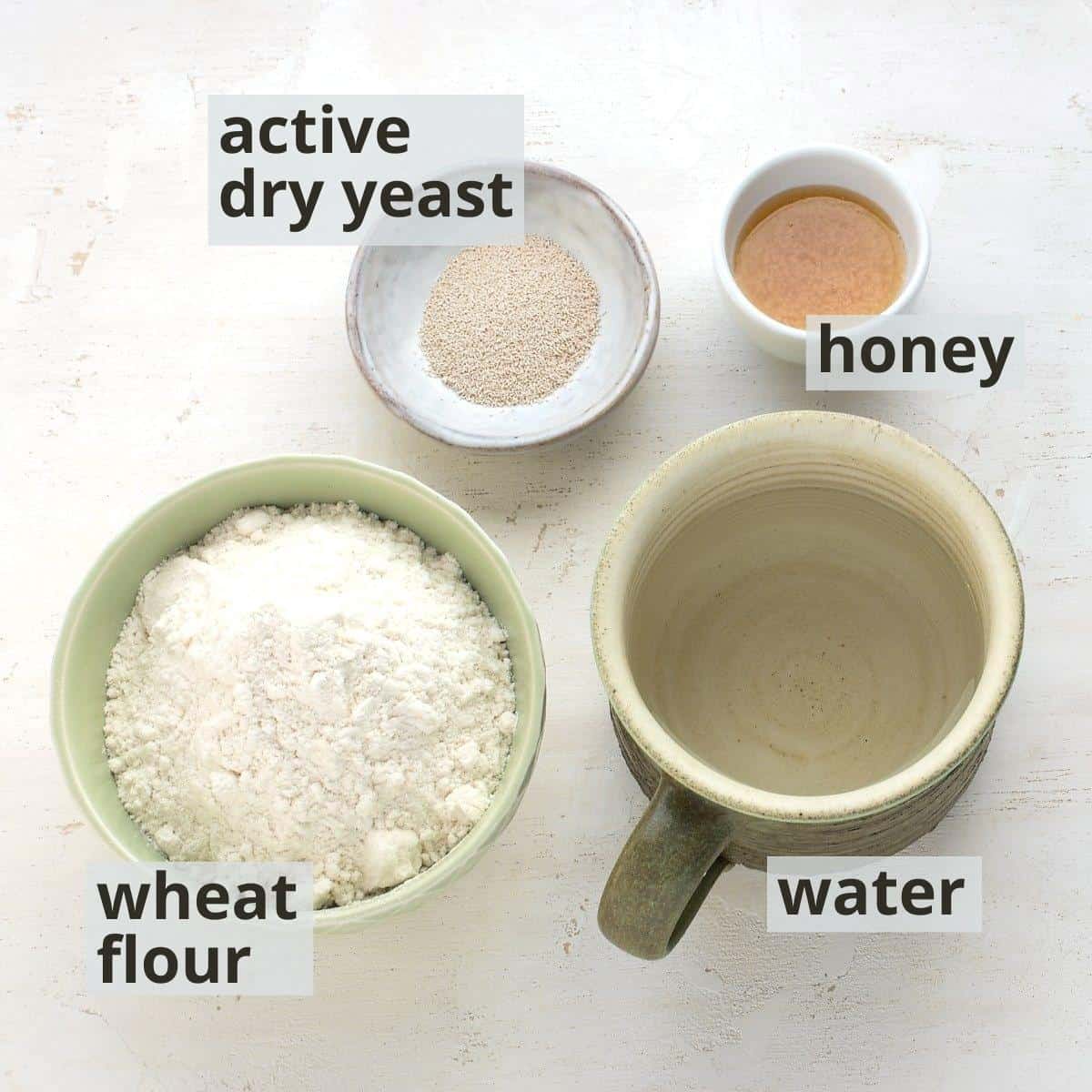
- Warm water; 105-115°F
- Honey; or granulated sugar. The best choice would be barley malt syrup; if you have it, definitely use that! Malt contains simple sugars that are great for encouraging yeast to ferment.
- Active dry yeast
- All-purpose flour
Regular yeast dough:
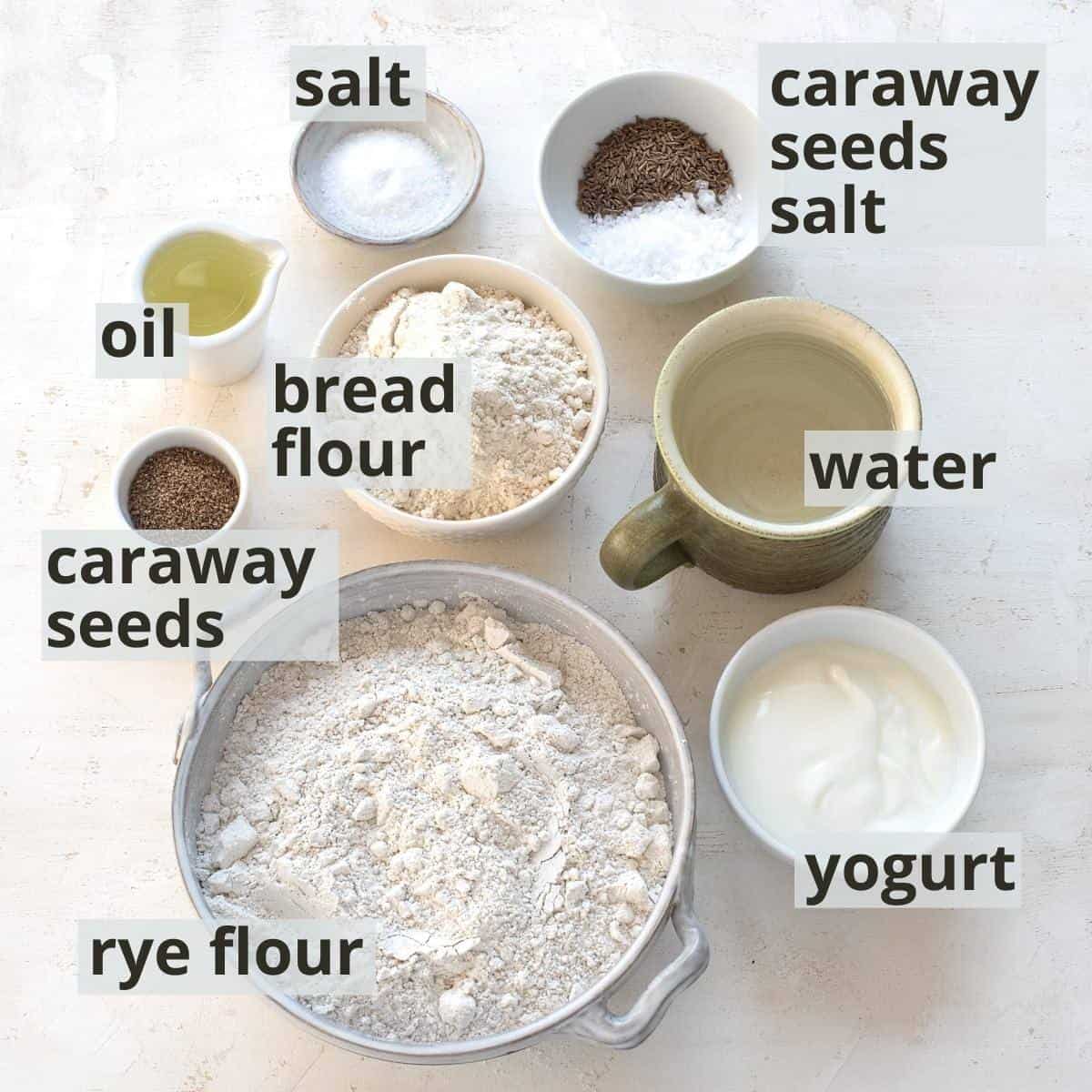
When the first dough has risen, simply add these ingredients to it:
- Warm water; 105-115°F
- White plain yogurt; at room temperature. I used yogurt with about 4% fat. The sour milk product adds moisture to the pastry.
- Salt
- Caraway seeds; crushed. Learn how to grind spices by hand
- Wheat bread flour; for dough + to flour the surface
- Rye flour; finely ground
Sprinkle:
- A mixture of salt, preferably coarse salt, and caraway seeds; to be sprinkled on the top of the rolls before baking. A little water to moisten the pastry surface before sprinkling.
✅ You’ll find the exact amount of ingredients below in the recipe card, which you can also print out.
Equipment: I made the dough in a stand mixer fitted with a dough hook. You also need a cookie sheet, baking paper, and pastry brush to coat the rolls with water. Use a plastic dough scraper to handle the dough so it doesn't stick to your hands.
➜ How to make rye bread rolls
Preparing perfect yeast dough
STEP 1: Let's start with the preparation of the first yeast dough (omládek).
Dissolve honey or sugar in warm water. Mix the flour with the active dry yeast. Pour the sweetened water into the bowl and gradually add the flour mixture. Whisk by hand to avoid lumps. The result should be a semi-liquid mass.
Cover the bowl with a kitchen towel and let rise in a warm place for 45 minutes. During this time, the first dough multiplies its volume and bubbles appear on the surface.
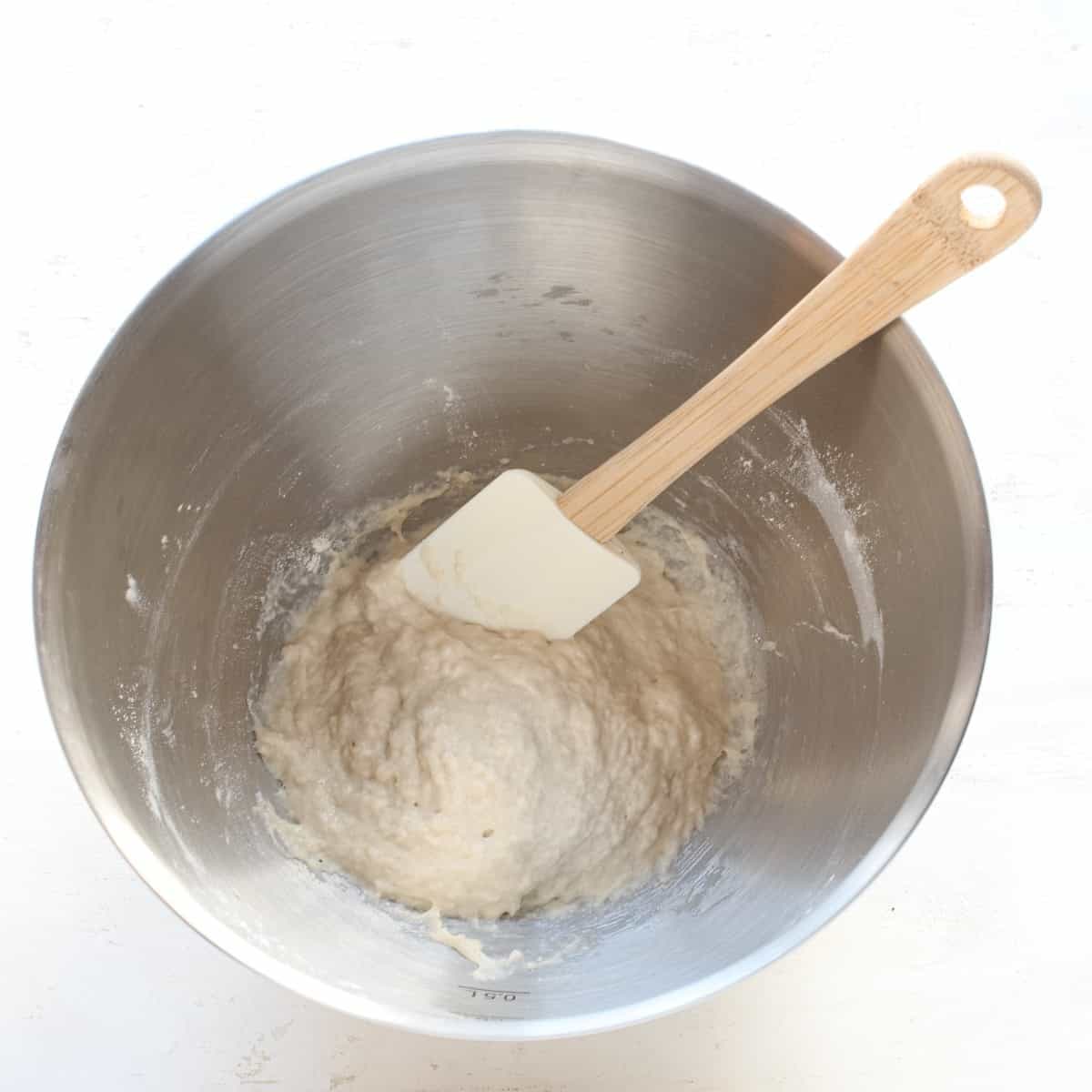
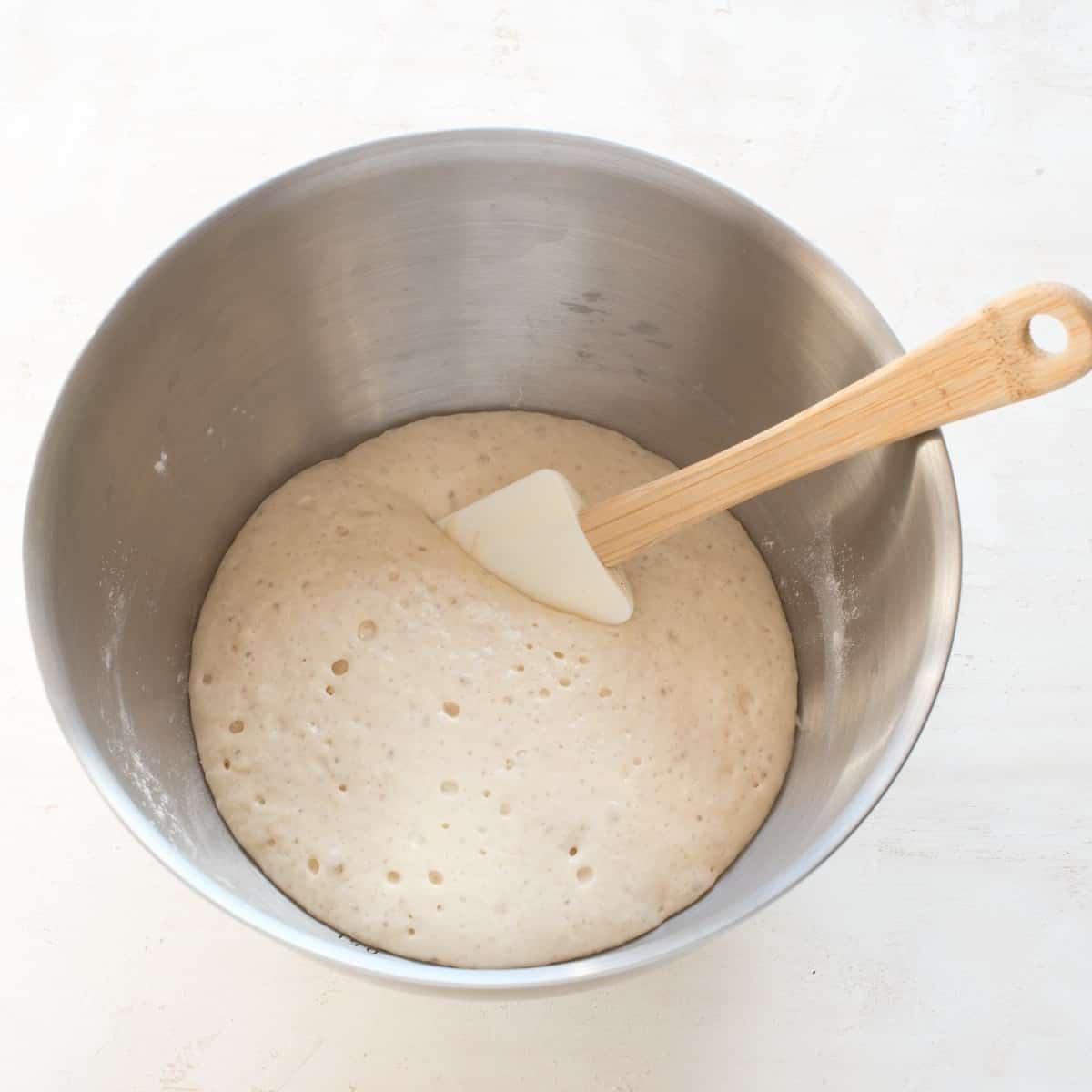
⇢ Learn how to make yeast dough rise in oven
STEP 2: Add lukewarm water, white yogurt, and wheat and rye flour to the fermented base. Mix briefly. Then add the oil, salt, and crushed caraway seeds. Make a smooth, elastic dough.
NOTE: I highly recommend using a stand mixer fitted with a dough hook to make the dough. Because the dough contains rye flour, it is quite sticky. If you are working by hand, knead the dough in a bowl, beating it with a wooden spoon.
STEP 3: Using a plastic scraper, transfer the kneaded dough to a clean bowl. Cover with a tea towel or plastic wrap and set aside in a warm place for 45 minutes to rise.
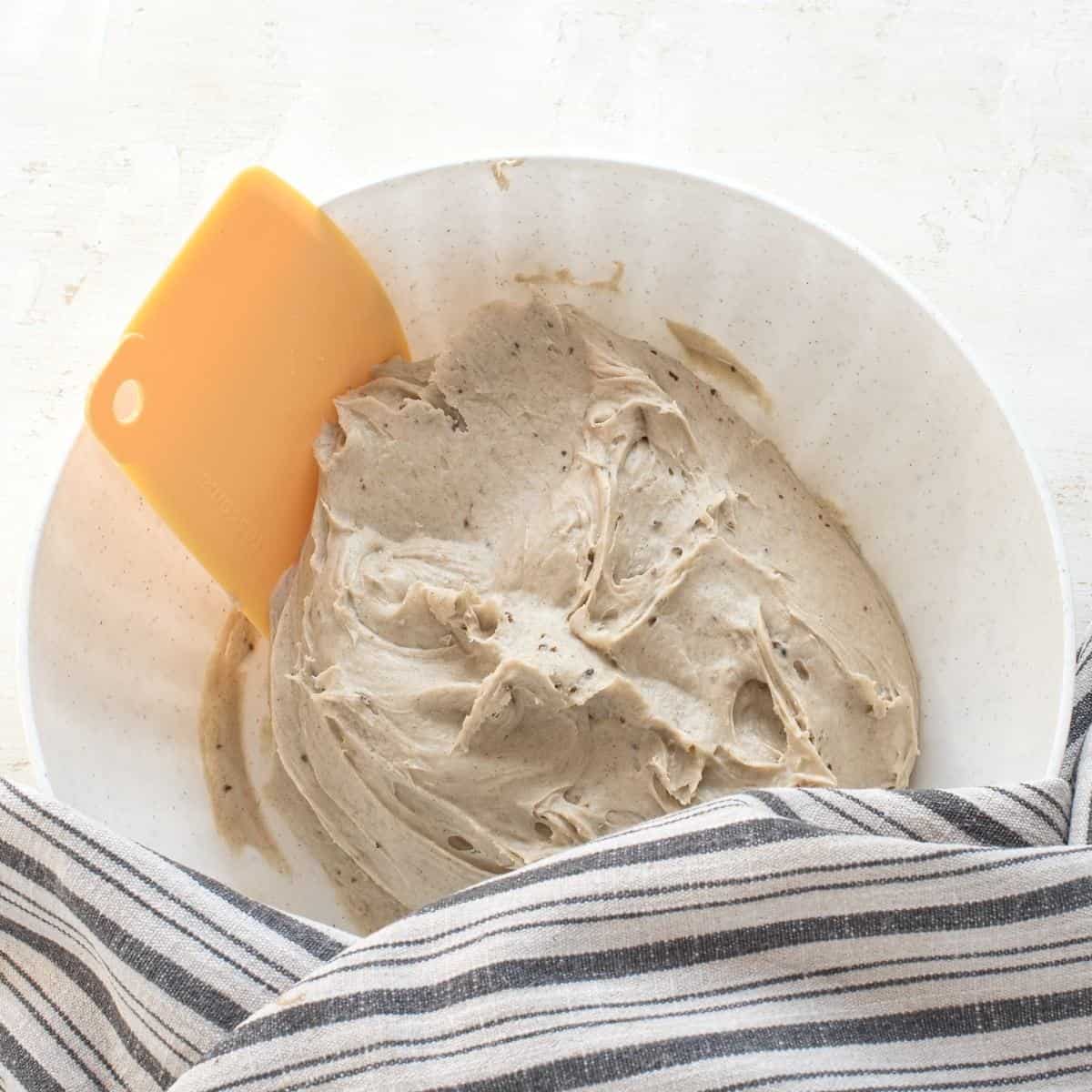
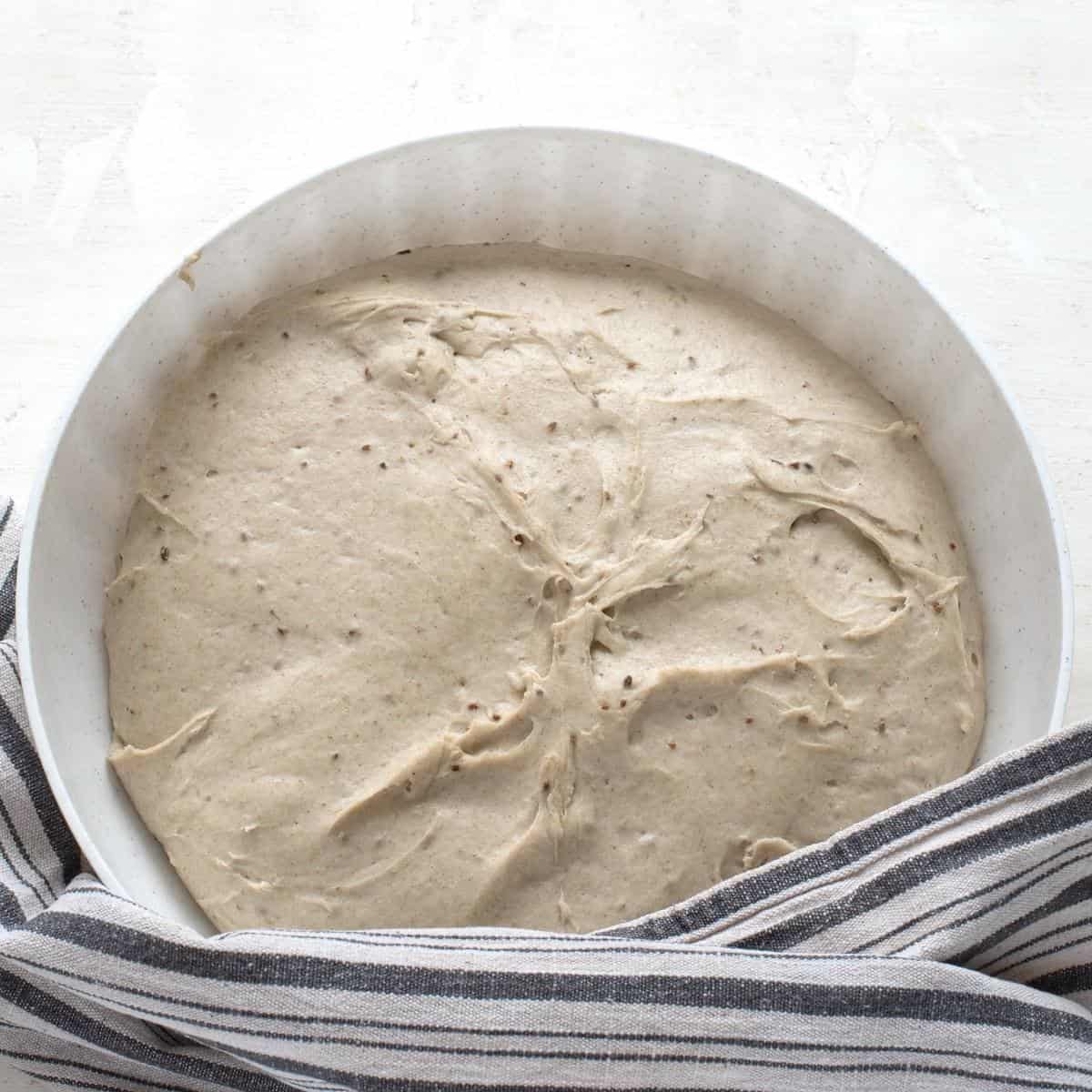
Shaping rye rolls
STEP 4: Sprinkle the work surface with flour. Turn out the dough on the floured surface and dust it with more flour. Pull up the edges of the dough and fold them like a letter.
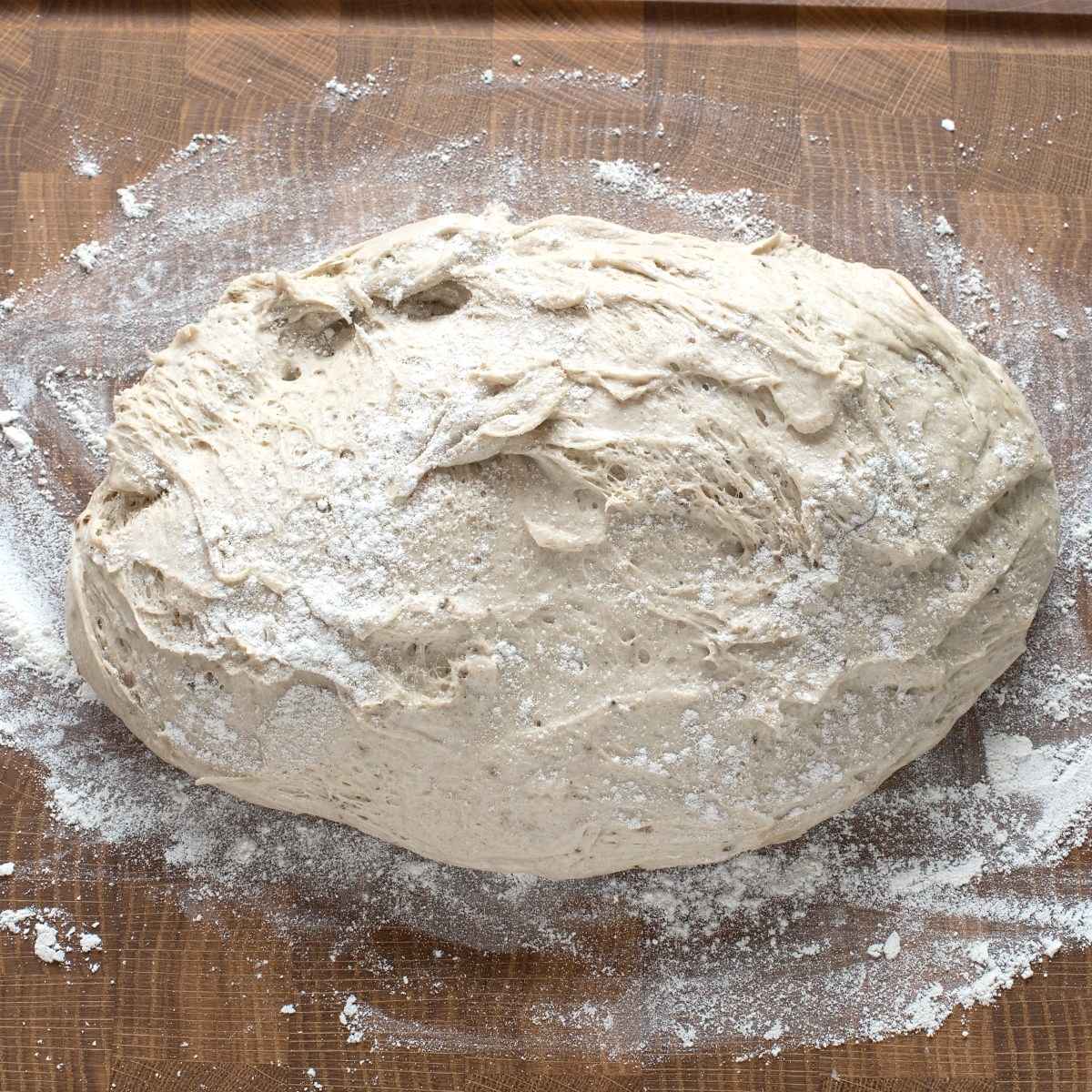
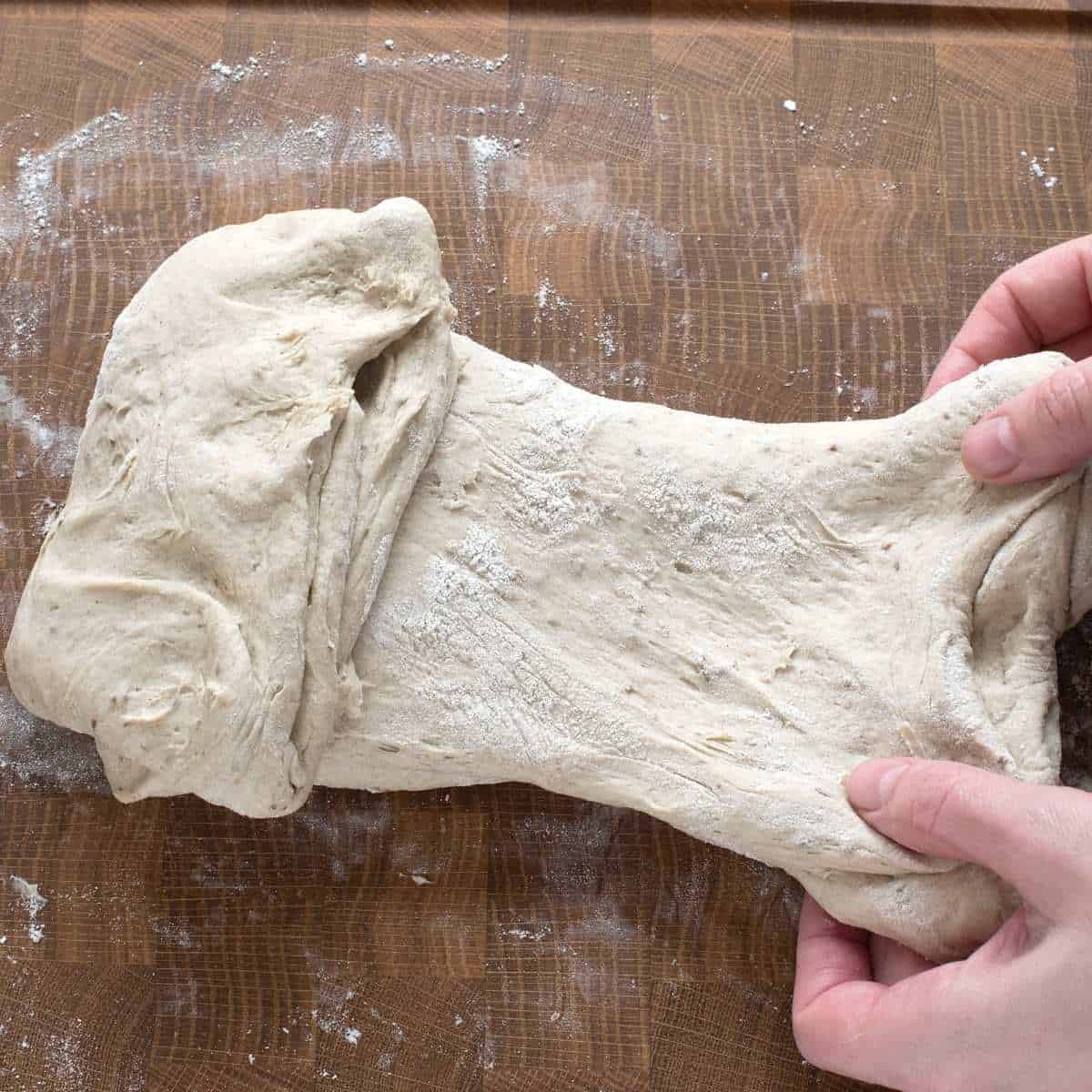
STEP 5: Divide the dough into equal-sized pieces. I weighed out my dough; for one rye roll, make about 4 ounces (115 g) of dough. If you prepare the rolls according to the basic recipe, you'll have enough for about 8 rye rolls.
STEP 6: Again, pull up the edges of each piece of dough and fold toward the center. Turn the roll seam side down, and round into a smooth oblong shape with your hands. This way, form all rolls.
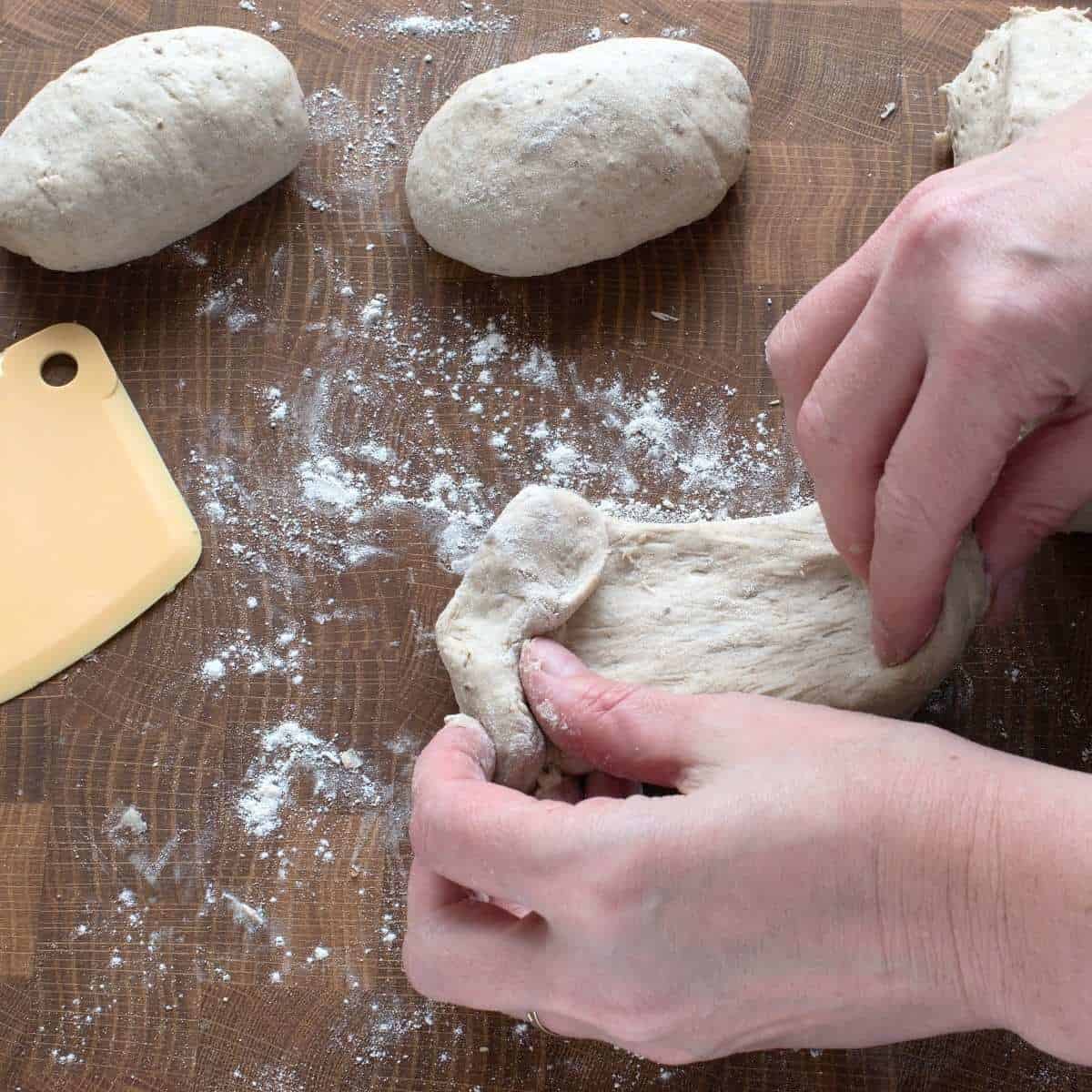
STEP 7: Place the rolls on a baking sheet lined with parchment paper. Make a lengthwise cut in the middle of each shape (a sharp razor has worked well for me).
Cover with a tea towel and allow to rise in a warm place for 30 minutes.
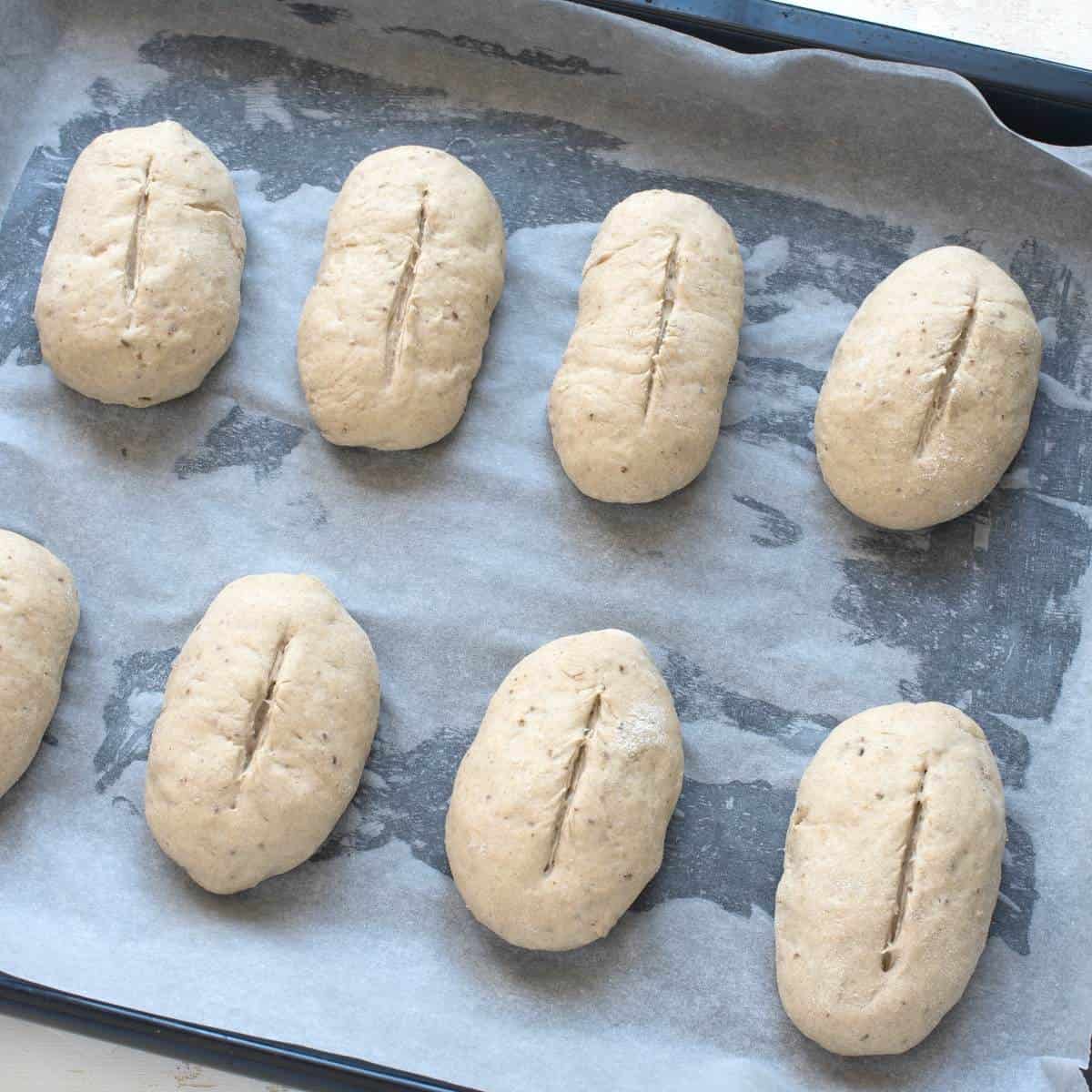
Sprinkling of the top
STEP 8: Brush the rolls with room temperature water and sprinkle the cut surface with a mixture of coarse or common salt and caraway seeds.
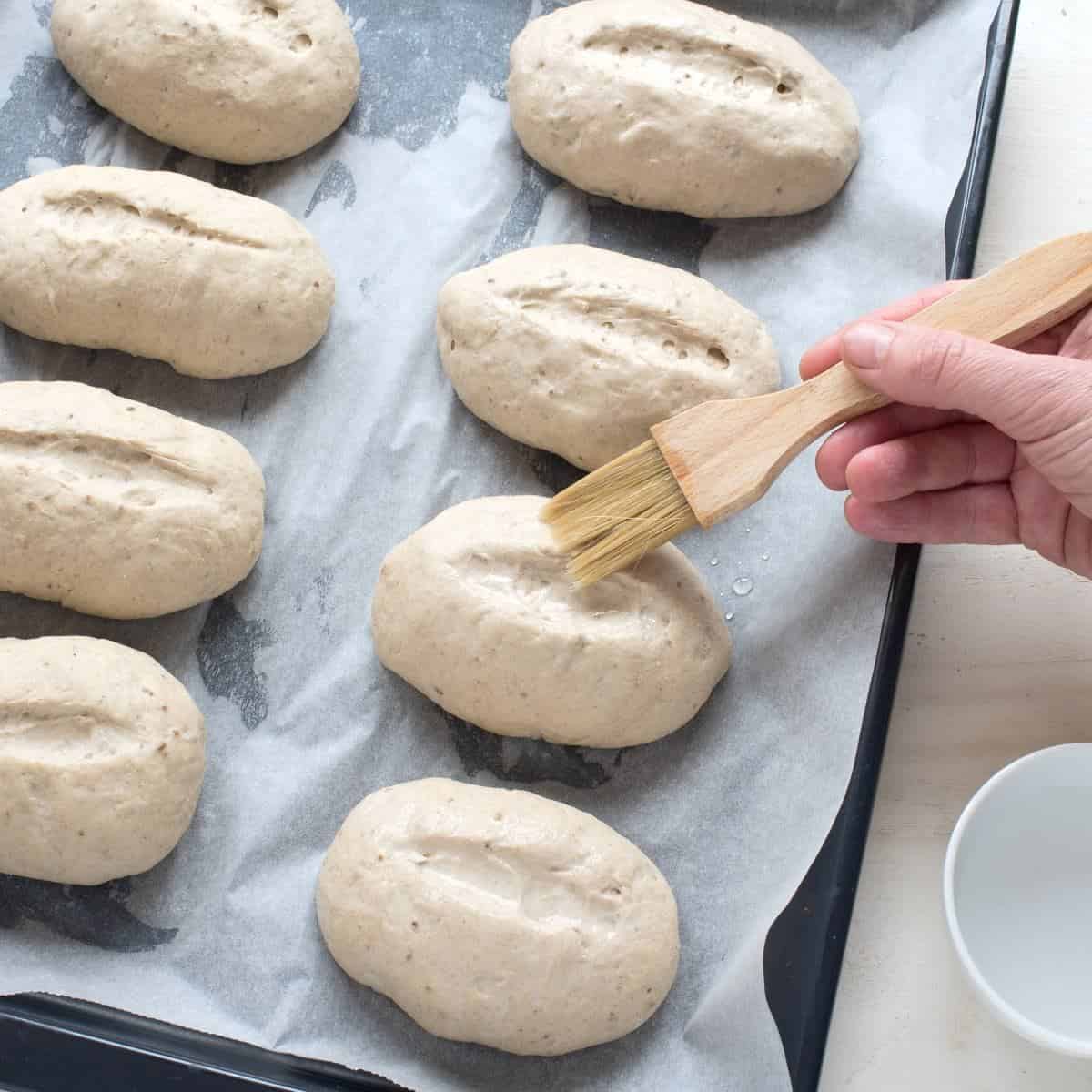
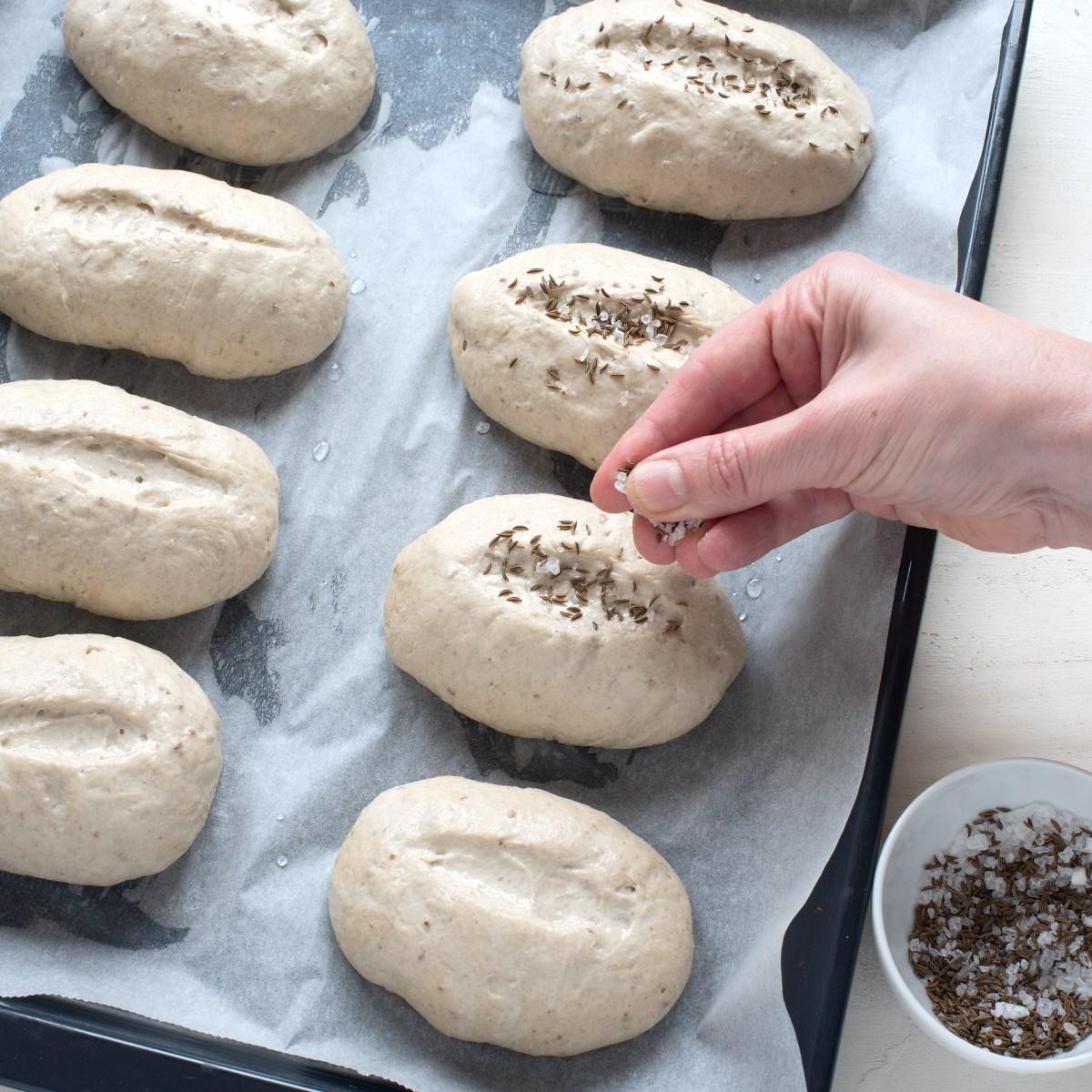
Baking
STEP 9: Preheat the oven to 425°F (220°C) and place the sheet of rolls on a medium rack. Bake for 20-25 minutes until the surface turns golden brown.After removing the rolls from the oven, let them cool for a few minutes, then transfer them to a cooling rack.
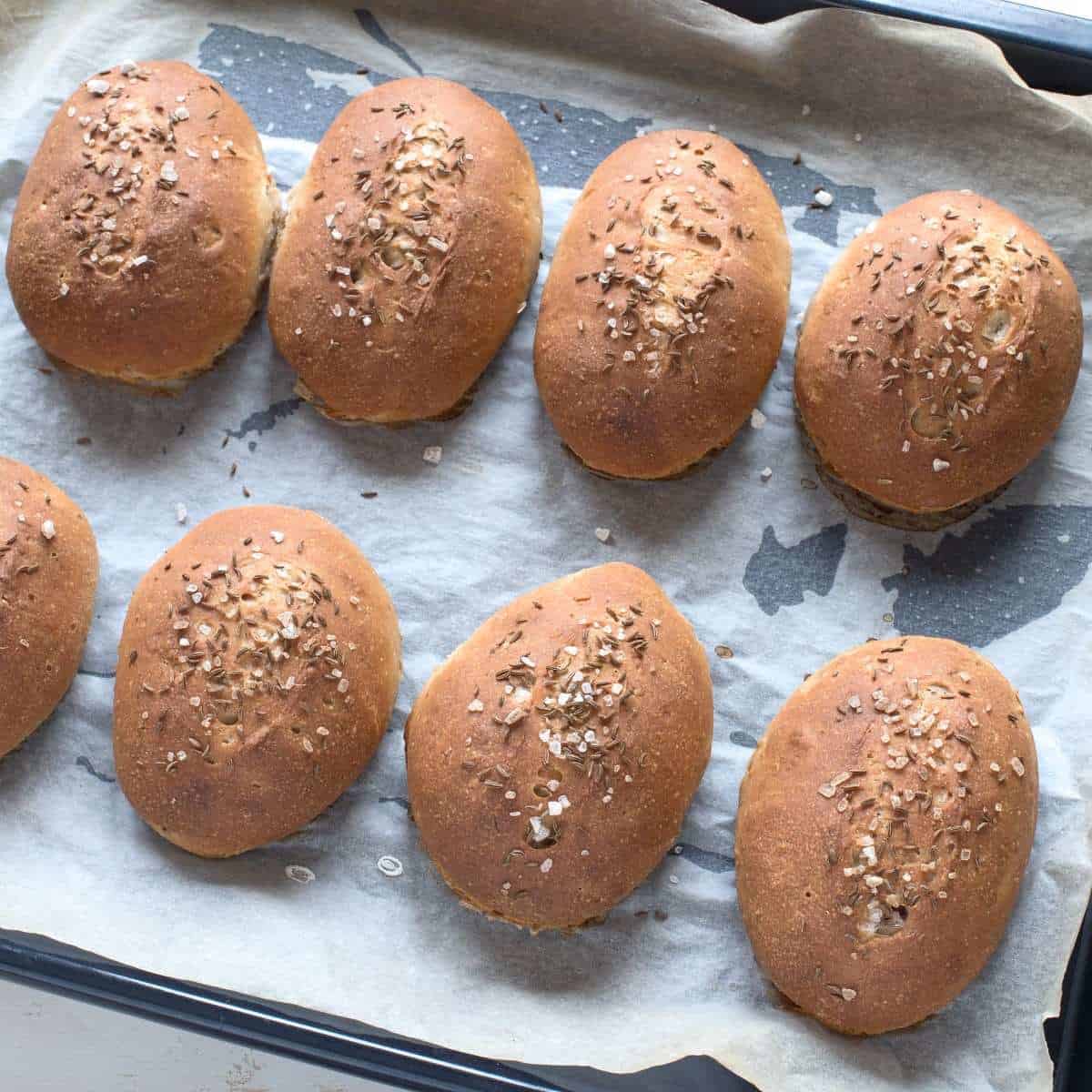
➜ Serving ideas
These rye rolls are pretty versatile and can be used in the same way as rye bread. However, the sprinkling of salt and caraway seeds makes them even more pronounced in taste.
Rye rolls are a great base for a tasty sandwich to take on a family outing or as a snack to take to work or school. Top them with some tasty bread spread, add a cold cut of ham, salami, or cheese, and garnish with fresh vegetables.
Dalamanky rolls are an excellent accompaniment for soups to create a light, satisfying dish.
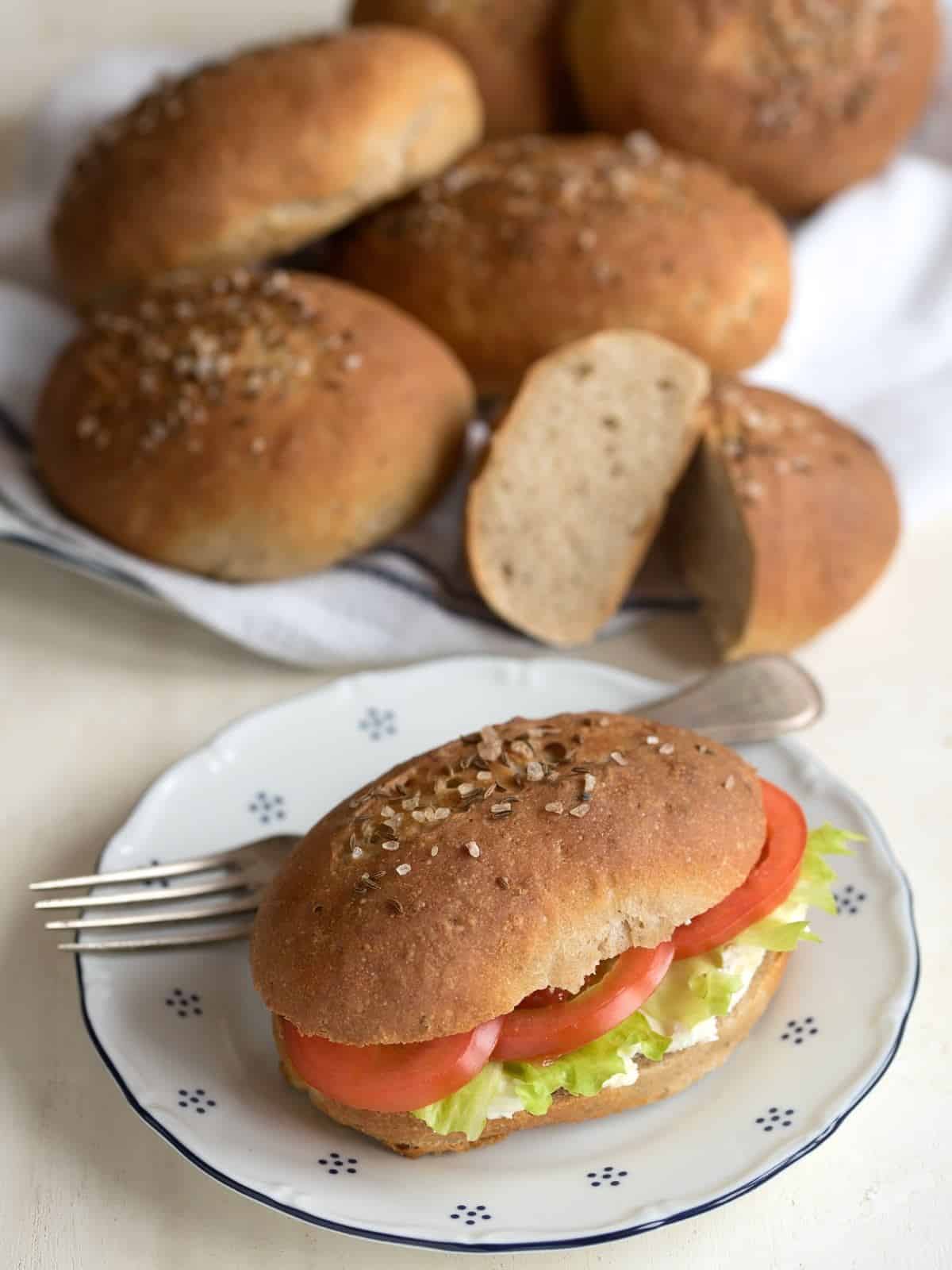
➜ How long will rye rolls last?
Like other baked goods, these rye rolls taste best the same day they are made. But thanks to the technique of making the yeast dough and the addition of yogurt, they stay soft for a few next days.
At room temperature: Wrap the cooled rolls in a clean tea towel and store them in a breadbox. Use within four days. You can also store the rolls in a resealable plastic bag. However, be aware that they will get wet on the surface, and the salt sprinkles will dissolve.
In the freezer: Bread rolls freeze well. Place them in a resealable bag or airtight container in the freezer, where they will keep for about three months.
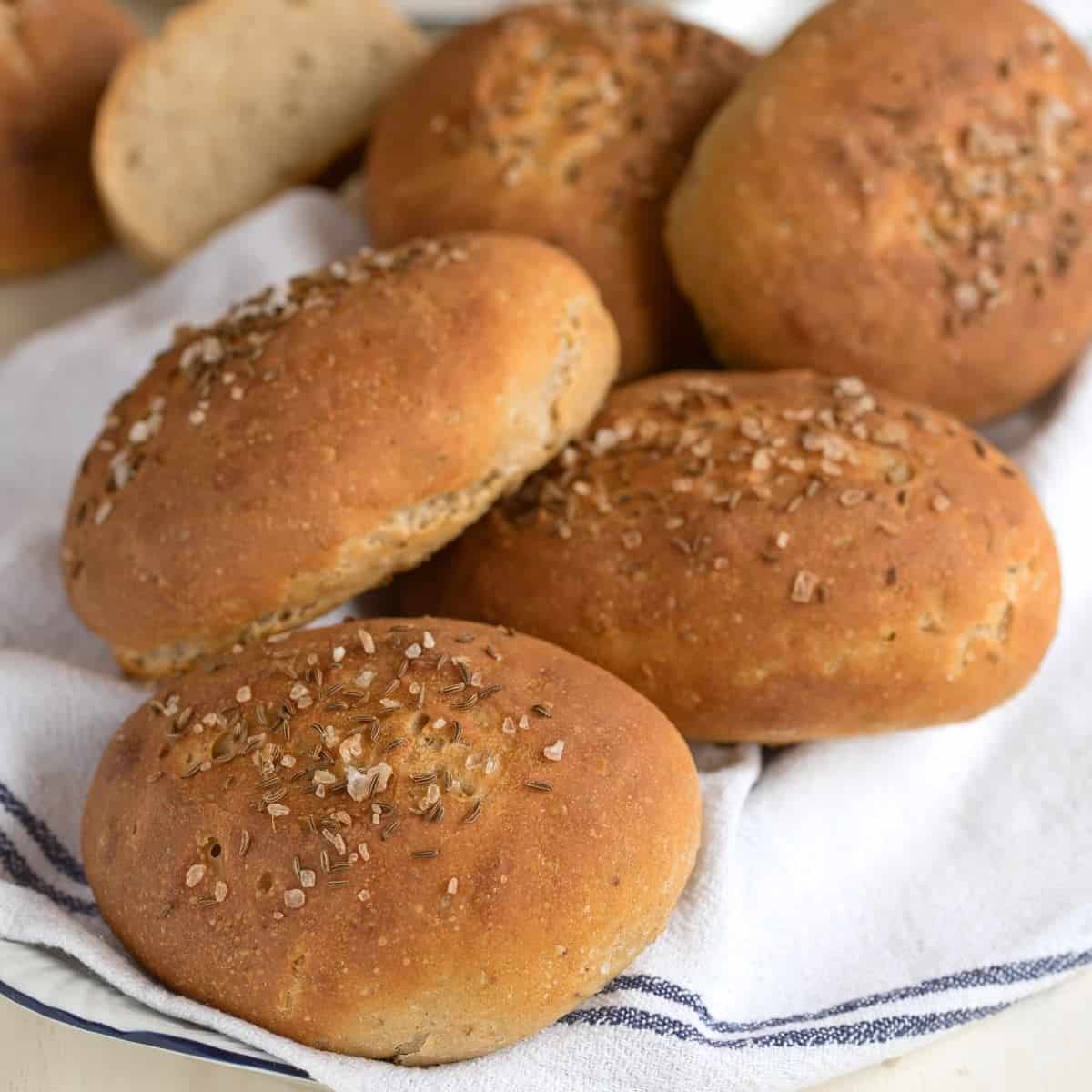
➜ Helpful hints
- Rye rolls take three hours to make, but most of that time is spent rising. Plan ahead to have the rolls ready when you need them.
- The yeast dough made with rye flour is sticky. Take this into account and handle the dough with a plastic scraper, remembering to dust your work surface with flour. Also, keep the flour on hand just in case when shaping the rolls.
More bread recipes:
Tried this recipe?
Leave a review down in the comments! ⭐⭐⭐⭐⭐
Follow me on Facebook and Pinterest. Subscribe to my newsletter. Send me any question about Czech cuisine to my e-mail. I love hearing your feedback!
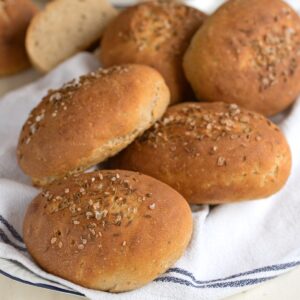
Rye Bread Rolls (Czech Dalamanky)
Ingredients
First yeast dough:
- ½ cup warm water (120 ml) 105-115°F / 44°C
- 1 teaspoon bee honey or granulated sugar
- 1 teaspoon active dry yeast
- 1 cup all-purpose flour (130 g)
Regular yeast dough:
- ¾ cup warm water (180 ml) 105-115°F / 44°C
- ⅓ cup plain yogurt (80 g)
- 3 Tablespoons oil canola or sunflower oil
- 2 teaspoons salt
- 2 teaspoons caraway seeds crushed
- 1 cup wheat bread flour (130 g)
- 1 and ¾ cups rye bread finely ground
Sprinkle:
- 1 teaspoon coarse salt
- 1 teaspoon caraway seeds
- 2 Tablespoons water at room temperature
Instructions
First yeast dough:
- Dissolve honey or sugar in warm water. Mix the flour with the active dry yeast. Pour the sweetened water into the bowl and gradually add the flour mixture. Whisk by hand to avoid lumps. The result should be a semi-liquid mass.
- Cover the bowl with a kitchen towel and let rise in a warm place for 45 minutes.
Regular yeast dough:
- Add lukewarm water, white yogurt, and wheat and rye flour to the fermented base. Mix briefly. Then add the oil, salt, and crushed caraway seeds. Make a smooth, elastic dough.
- Using a plastic scraper, transfer the kneaded dough to a clean bowl. Cover with a tea towel or plastic wrap and set aside in a warm place for 45 minutes to rise.
- Sprinkle the work surface with flour. Turn out the dough on the floured surface and dust it with more flour. Pull up the edges of the dough and fold them like a letter.
- Divide the dough into equal-sized pieces. I weighed out my dough; for one rye roll, make about 4 ounces (115 g) of dough. If you prepare the rolls according to the basic recipe, you'll have enough for about 8 rye rolls.
- Again, pull up the edges of each piece of dough and fold toward the center. Turn the roll seam side down, and round into a smooth oblong shape with your hands. This way, form all rolls.
- Place the rolls on a baking sheet lined with parchment paper. Make a lengthwise cut in the middle of each shape (a sharp razor has worked well for me).
- Cover with a tea towel and allow to rise in a warm place for 30 minutes.
- Brush the rolls with room temperature water and sprinkle the cut surface with a mixture of coarse or common salt and caraway seeds.
- Preheat the oven to 425°F (220°C) and place the sheet of rolls on a medium rack. Bake for 20-25 minutes until the surface turns golden brown.After removing the rolls from the oven, let them cool for a few minutes, then transfer them to a cooling rack.
Notes
- Makes 8 Dalamánky rye rolls.
- I highly recommend using a stand mixer fitted with a dough hook to make the dough. Because the dough contains rye flour, it is quite sticky. If you are working by hand, knead the dough in a bowl, beating it with a wooden spoon.
- Rye rolls are a great base for a tasty sandwich to take on a family outing or as a snack to take to work or school. Top them with some tasty bread spread, add a cold cut of ham, salami, or cheese, and garnish with fresh vegetables.
- Dalamanky rolls are an excellent accompaniment for soups to create a light, satisfying dish.
- Rye rolls take three hours to make, but most of that time is spent rising. Plan ahead to have the rolls ready when you need them.
DISCLAIMER: Because I come from Central Europe, my recipes are based on metric units such as grams or milliliters. Check out how I convert metric units to the U.S. system:
Conversion chart

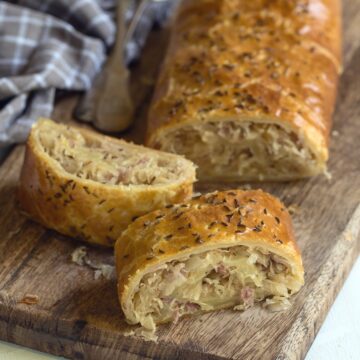
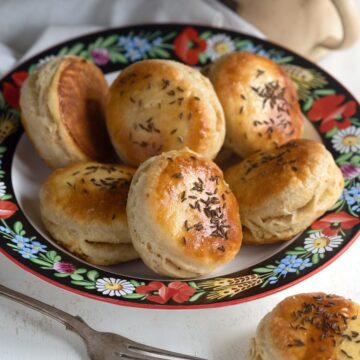
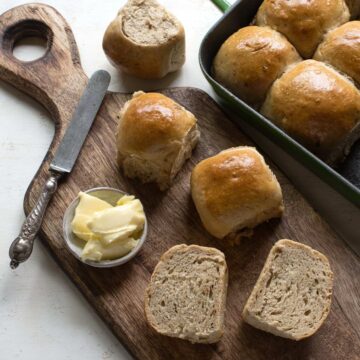
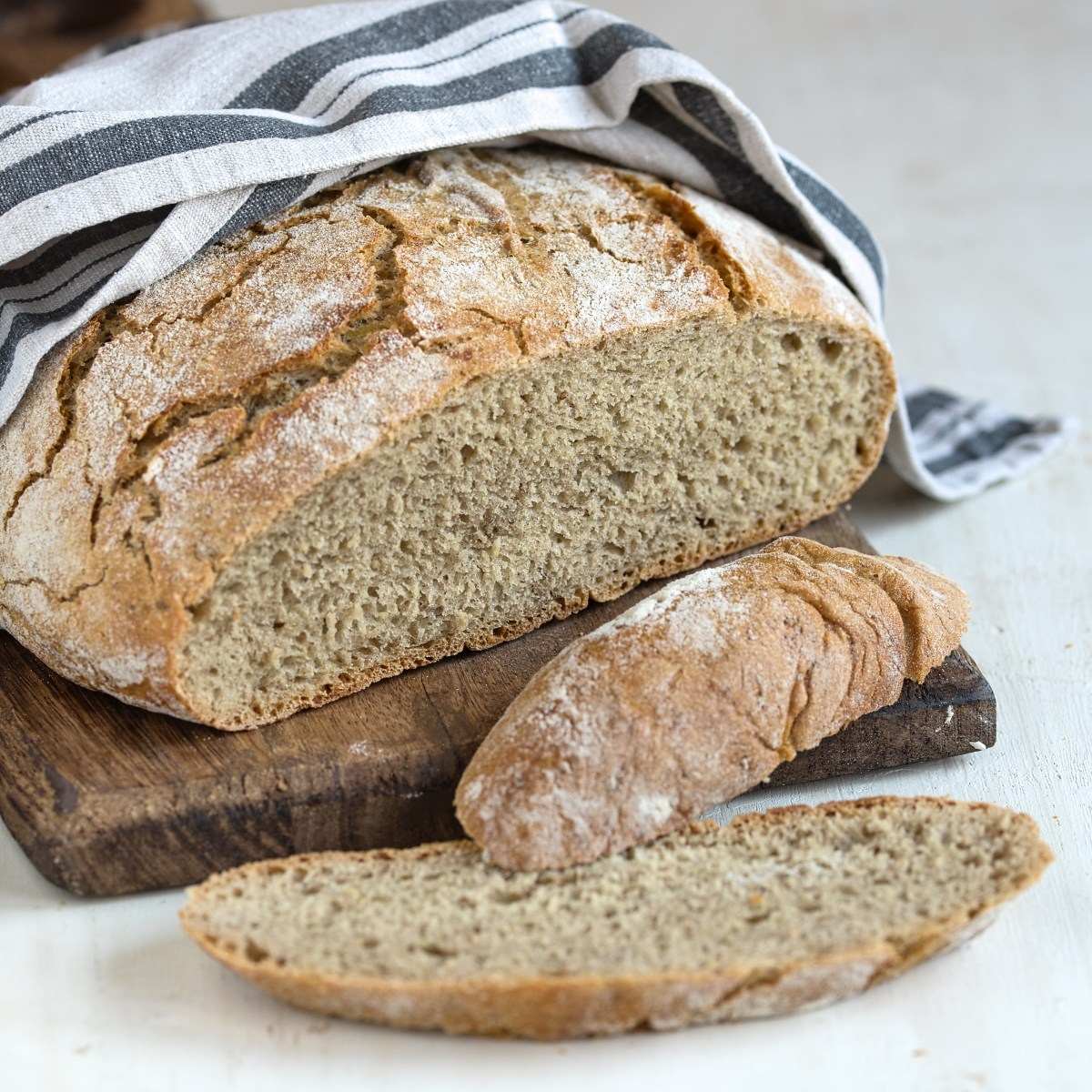
Nicole
Thank you for this delicious recipe! It's just how I remember my friend's Moravian grandmother making them :). As children, we couldn't get enough of these and I'm so happy I can make them at home now!
Anicka Cooklikeczechs.com
I am glad you liked the recipe and it brought back pleasant memories - they sound really nice. Thank you for the comment!
Randy Rockwell
Petra …. I made the Czech Dalamánky today and they came out great! I really liked the texture and the nutty taste. These will definitely be my go to buns for sandwiches and burgers. Thank you so much for sharing this recipe with us!
Anicka Cooklikeczechs.com
Hello Randy, I am happy the recipe was a success! Thank you for the nice comment.
Vicki
The instructions are spot-on and result in a soft, delicious rye roll. Another outstanding recipe. I love this site!
Anicka Cooklikeczechs.com
I am delighted to hear the recipe was a success! Thank you for the comment, Vicki.
Raymond
Hi
The list of ingredients for the first yeast dough reads ‘half’ a cup of warm water’. I guess this should read 1 cup or more.
I tried the recipe yesterday and the half cup of water to the full cup of flour did not yield a ‘semi liquid’ mass. I added another half cup of water. Grateful if you could clarify if this is an error in the recipe or if I should be doing something else. I have little experience at bread making- only a beginner! 🙏🏼
Tracey
That worked (ish). Didn’t rise like I thought. But was quite delicious.
I’d like information on what is meant, temperature wise, as a ‘warm’ place.
I’d also like to know the timing if I wanted this as a loaf.
Anicka Cooklikeczechs.com
Dear Tracey, thank you for your comment!
A warm place means at least room temperature and slightly higher and draft-free. I recommend lightly dusting the dough with flour to keep it from drying out on the surface.
Next, cover the bowl of dough with a clean tea towel, it will help to retain the heat. I honestly do not know how long it takes to rise if you would like to make a loaf - I have no experience and would hate to give bad advice. Good luck!
Neriman
I found my regular yeast dough had too much water and the dough was very sticky. I was wondering if different bread flours need less liquid. I used good quality dark rye and wheat bread flour.
Tanya
Lovely recipe - I make them regularly now and they're enjoyed by all the family. Thank you.
Petra Kupská
I thank you for your nice feedback, Tanya!